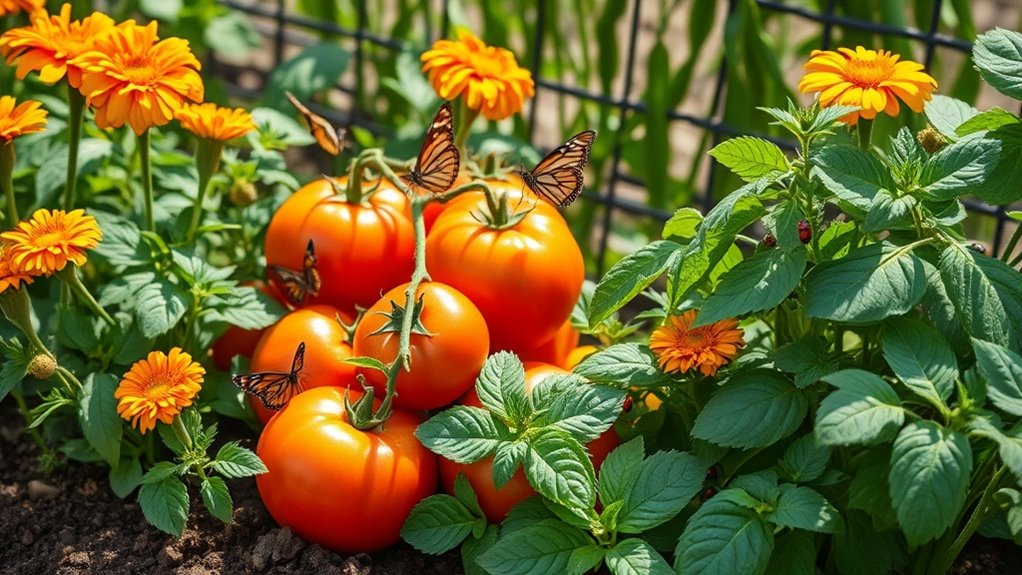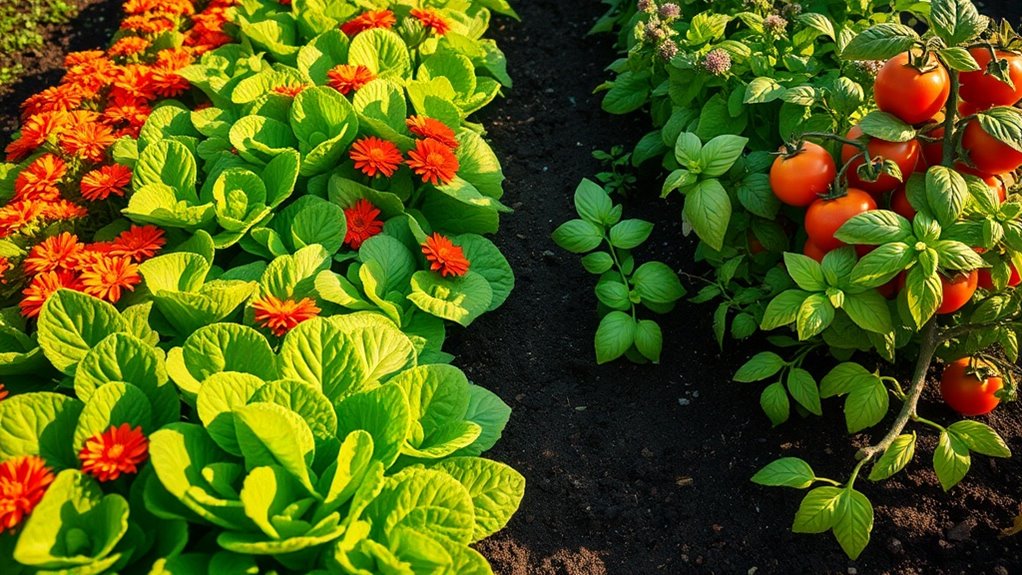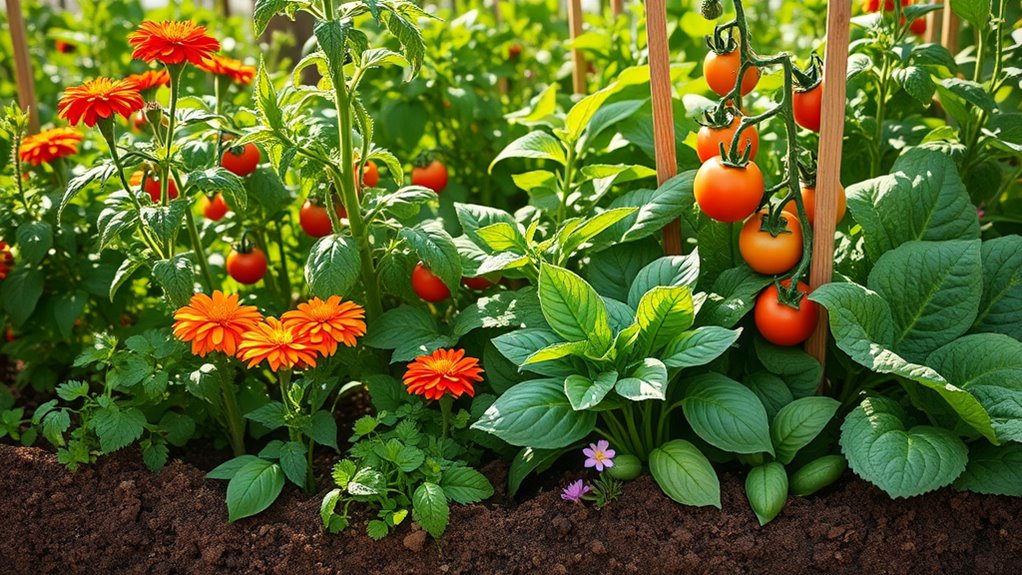I Tried Companion Planting – Here’s What Really Happened
If you’ve tried companion planting, you’ve likely noticed its potential impact on your garden. By pairing plants, you can enhance growth, optimize nutrient uptake, and deter pests. For example, tomatoes with basil can yield both flavor and pest control benefits. However, be aware of challenges like finding compatible pairs and varying growth rates that may lead to competition. Discover how you can navigate these challenges and maximize your garden’s potential through effective strategies and careful planning.
What Is Companion Planting?
Companion planting is a strategic gardening technique that involves pairing specific plants together to enhance growth, deter pests, and improve overall garden health.
By understanding the relationships between various species, you can create a more efficient garden ecosystem. For instance, some plants naturally repel harmful insects, while others attract beneficial pollinators. Additionally, certain pairings can optimize nutrient uptake, as one plant might provide shade or support for another. By implementing companion planting, you’ll maximize your garden’s productivity and resilience, leading to healthier plants and potentially higher yields. This method fosters biodiversity, making your gardening efforts more sustainable and effective. Furthermore, specific plant combinations can enhance growth rates and promote a healthier garden environment.
My Initial Plant Pairings
Choosing the right plant pairings can greatly impact your garden’s success.
Initially, you might consider pairing tomatoes with basil; this combination is known for enhancing flavor while deterring pests.
Next, try planting carrots alongside onions, as the latter can repel carrot flies.
Additionally, marigolds can be introduced to ward off unwanted insects, making them an excellent companion for nearly any vegetable.
Finally, consider incorporating beans with corn; beans fix nitrogen in the soil, benefiting corn’s growth.
These initial pairings establish a foundation for a diverse ecosystem, promoting healthier plants and potentially higher yields in your garden. Moreover, the synergy between basil and tomatoes not only boosts growth but also enhances the overall gardening experience.
Benefits I Observed
While experimenting with different plant pairings, I observed several significant benefits that enhanced my gardening experience.
First, certain combinations, like tomatoes and basil, promoted healthier growth, likely due to increased nutrient absorption.
Second, pest control improved; for instance, marigolds deterred nematodes, protecting neighboring crops.
Third, I noticed enhanced pollination efficiency with companion plants attracting beneficial insects.
Additionally, companion planting optimized space utilization, enabling a diverse range of crops in limited areas.
Finally, the aesthetic appeal of mixed plantings contributed to a more vibrant garden environment. Moreover, the practice of companion planting fosters a symbiotic relationship between plants, ultimately leading to increased resilience against environmental stresses.
Challenges I Faced
Gardening isn’t without its hurdles, and my experience with companion planting highlighted several challenges that required careful navigation.
One major issue was determining compatible plant pairings; not all combinations yield benefits, and some may even hinder growth. Additionally, varying growth rates created competition for resources, complicating maintenance. You might also face pest management difficulties, as some companion plants attract unwanted insects. Soil nutrient management posed another challenge, as different plants have distinct needs. Finally, weather conditions can impact plant interactions, making it essential to monitor environmental factors closely.
These obstacles require ongoing adjustments and a proactive approach to gardening success. Moreover, understanding companion planting principles can significantly improve your chances of overcoming these challenges.
Unexpected Outcomes
How does one account for the surprising benefits that can arise from companion planting? You might find that certain plant combinations enhance growth, deter pests, or even improve flavor. For instance, marigolds can repel nematodes while attracting beneficial insects. Additionally, understanding effective companion planting strategies can further enhance your garden’s health and productivity.
| Plant Pairing | Benefit | Outcome |
|---|---|---|
| Tomatoes & Basil | Improved flavor | Enhanced taste in tomatoes |
| Carrots & Onions | Pest deterrence | Reduced carrot fly presence |
| Cabbage & Dill | Growth promotion | Increased cabbage yield |
| Beans & Corn | Nitrogen fixation | Enhanced soil fertility |
These unexpected synergies can transform your gardening experience.
Tips for Successful Companion Planting
Unexpected outcomes from companion planting can lead to a rewarding gardening experience, but achieving these results requires careful planning and consideration.
Start by researching plant compatibility; some species enhance growth while others inhibit it. Utilize companion planting charts to guide your choices. Rotate crops annually to prevent soil depletion and pest buildup. Maintain proper spacing to promote adequate airflow and sunlight. Regularly monitor for pests and diseases; early intervention is key. Finally, document your experiences to refine your approach in future seasons. Additionally, be aware of harmful veggie pairings that can negatively affect your garden’s health and productivity.
Final Thoughts on My Experience
Reflecting on my companion planting journey, it’s evident that this practice offers both challenges and rewards.
You’ll discover that strategic pairings can enhance growth and pest resistance, yet you may encounter unexpected plant interactions.
Understanding the biology behind these relationships is essential; not all combinations yield favorable results.
Monitoring soil health and moisture levels becomes essential as these factors influence plant performance.
While initial trials may require adjustment, the long-term benefits include improved biodiversity and reduced chemical reliance.
Ultimately, embracing companion planting can transform your gardening approach, fostering a more sustainable environment and yielding a thriving garden ecosystem. Additionally, having knowledge of perfect plant pairs can significantly enhance your gardening success.





